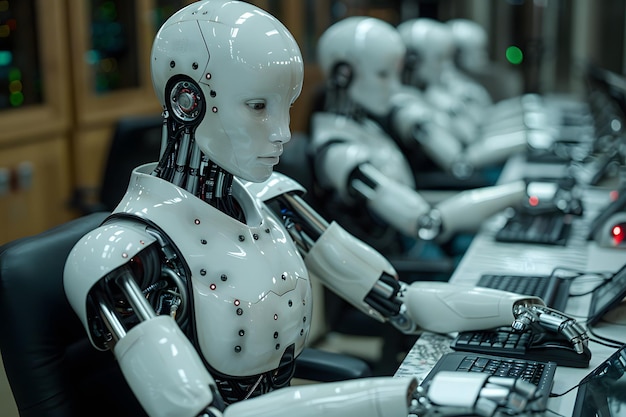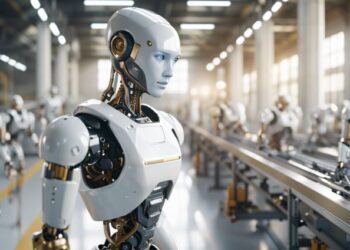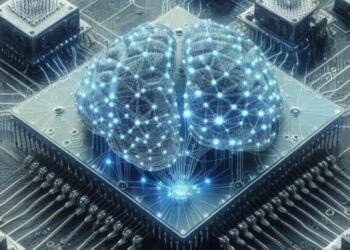The whispers of a robotic future are over. We are living in the age of automation, a period of profound transformation where intelligent machines are no longer confined to the pages of science fiction but are actively reshaping the global workforce. From the gleaming, hyper-efficient production lines of automotive giants to the pristine operating theaters of advanced hospitals and the sprawling fulfillment centers that power our digital economy, robotics is the silent, powerful engine of a new industrial revolution. This isn’t a distant forecast; the robotic workforce is already here, and its impact is accelerating at an unprecedented rate.
This seismic shift is driven by a perfect storm of technological maturity: exponential advancements in artificial intelligence, the falling cost of sophisticated sensors, and the engineering prowess to create machines with remarkable dexterity and endurance. The result is a workplace in flux, presenting both incredible opportunities for productivity and growth, and pressing questions about the future of human labor. This article explores the multifaceted impact of robotics across key industries, delves into the intelligent technologies that grant these machines their autonomy, examines the complex economic and social implications, and charts a course for the skills and mindset needed to thrive alongside our new mechanical colleagues.
The Core Theaters of the Robotic Revolution
While robotics is a pervasive technology, its most dramatic impact can be seen in several key sectors that have become showcases for automation’s power. These industries provide a clear blueprint for how machines are redefining efficiency, precision, and scale.
A. Manufacturing: The Genesis and Future of Automation The automotive industry was the cradle of industrial robotics, adopting the first robotic arms like the UNIMATE over half a century ago for dangerous and repetitive tasks like spot welding. Today, that early adoption has evolved into a state of total integration. In a modern car factory, such as those operated by BMW or Ford, hundreds of robots work in a seamless, high-speed ballet.
- Precision and Power: Large, high-payload robotic arms lift and position entire car chassis with unerring accuracy, while others perform welds with a consistency that eliminates human error. They operate in hazardous environments, dealing with hot moldings and toxic fumes, dramatically improving worker safety.
- Quality Control: Equipped with high-resolution cameras and AI-powered computer vision, robots now perform microscopic quality inspections on engine parts and paint finishes, catching defects invisible to the human eye and ensuring near-perfect quality at a scale previously unimaginable.
- Case Study: BMW’s Humanoid Integration: Pushing the boundaries further, BMW is testing humanoid robots like Figure 01 in its factories. These robots, powered by advanced AI from partners like OpenAI, are designed to perform general-purpose tasks, learning and adapting to new processes, showcasing a future where robots are not just tools for one specific job, but versatile workers.
B. Logistics and Warehousing: The Amazon Effect The e-commerce boom would be impossible without a revolution in logistics, and Amazon is the undisputed pioneer. An Amazon fulfillment center is a testament to human-robot collaboration. The process begins the moment a customer clicks “buy.”
- Automated Storage and Retrieval: Instead of workers walking miles of aisles, a fleet of mobile robots (formerly Kiva, now Amazon Robotics) brings entire shelves of products to a stationary human picker. This “goods-to-person” model has dramatically increased the speed of order fulfillment, allowing for the rapid delivery promises that define the modern consumer experience.
- Sorting and Packing: Robotic arms with sophisticated sensors and suction grippers can now identify, pick, and place items into shipping boxes, optimizing space and reducing waste. High-speed sorting systems automatically route millions of packages to the correct outbound trucks.
- The Productivity Leap: Studies show that robotic integration can increase warehouse productivity by 200-300%. This efficiency has allowed companies like Amazon to process staggering volumes of orders, reducing fulfillment times from days to hours and fundamentally altering consumer expectations.
C. Healthcare: Precision, Endurance, and Safety In the medical field, robotics is not about replacing doctors but augmenting their skills to achieve superhuman levels of precision and control.
- Robotic-Assisted Surgery: The da Vinci Surgical System is a prime example. A surgeon sits at an ergonomic console, often in the same room, controlling miniature robotic arms inserted into the patient through tiny incisions. The system translates the surgeon’s hand movements into micro-movements, filtering out tremors and enabling procedures in tight spaces with greater precision than the human hand alone. This leads to less invasive surgery, reduced blood loss, and faster patient recovery times.
- Laboratory Automation: In diagnostics, robots now handle the tedious and repetitive tasks of processing thousands of medical samples, reducing the risk of human error and speeding up test results for everything from blood work to genetic sequencing.
- Rehabilitation and Support: Robotic exoskeletons are helping patients with spinal cord injuries or stroke to stand and walk again, accelerating physical therapy and improving quality of life. Sanitization robots use UV light to disinfect hospital rooms, reducing the spread of infections and protecting healthcare workers.
D. Agriculture: Seeding a High-Tech Harvest AgriTech is turning farms into data-driven, automated operations to meet the challenge of feeding a growing global population.
- Autonomous Tractors: Guided by GPS and AI, autonomous tractors can plow fields, plant seeds, and spray fertilizer 24/7 with pinpoint accuracy, optimizing the use of resources and reducing fuel consumption.
- Robotic Harvesters: Developing robots that can gently pick delicate produce like strawberries or lettuce has been a major challenge. However, new systems using advanced computer vision and soft-touch grippers are now being deployed to automate this labor-intensive work.
- Drone-Based Monitoring: Fleets of drones equipped with multispectral cameras fly over fields, gathering data on crop health, soil moisture, and pest infestations, allowing farmers to make targeted interventions instead of blanket-treating entire fields.
The Intelligence Engine: AI and Collaborative Robots (Cobots)
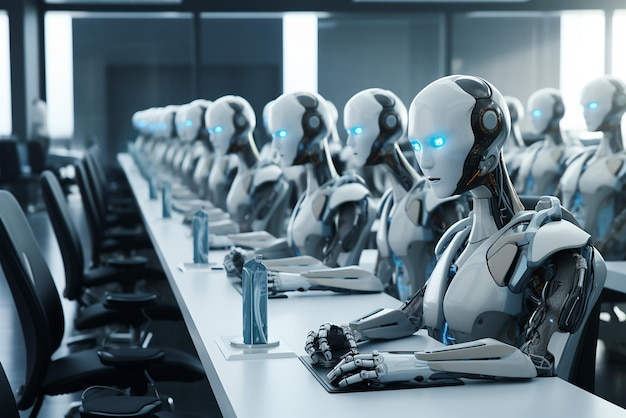
What makes a modern robot more than a simple machine is the intelligence that powers it. Artificial Intelligence (AI) and Machine Learning (ML) are the brains behind the brawn, while a new class of robot—the cobot—is changing the very nature of human-robot interaction.
A. How AI Gives Robots Their Smarts
- Computer Vision: AI allows robots to see and interpret their environment. In a factory, this means identifying a specific part on a moving conveyor belt or detecting a microscopic crack in a weld.
- Reinforcement Learning: This is how robots learn through trial and error, much like humans. A robotic arm trying to pick up a new type of object can attempt the task thousands of times in a simulation, receiving a “reward” for success. Over time, it develops the optimal strategy for gripping and moving the object without being explicitly programmed for that specific shape.
- Predictive Maintenance: By analyzing data from its own sensors (vibration, temperature), an AI-powered robot can predict when one of its components is likely to fail. This allows for maintenance to be scheduled before a breakdown occurs, preventing costly downtime.
B. Cobots: The Rise of the Robotic Teammate Traditional industrial robots are powerful and fast, but they operate within safety cages, completely separated from human workers. Collaborative robots, or “cobots,” are designed to do the opposite: work safely alongside people.
- Safety First: Cobots are equipped with advanced sensors that can detect a human presence. If a person gets too close or makes contact, the cobot will immediately slow down or stop, preventing injury.
- Ease of Use: Unlike industrial robots that require complex programming, many cobots can be “taught” a new task simply by having a human guide the robotic arm through the desired motions. This makes them accessible to small and medium-sized enterprises (SMEs) without dedicated robotics engineers.
- Flexibility: A cobot can be easily redeployed to different tasks around a workshop, from machine tending and assembly to packaging and palletizing, offering a flexible solution for high-mix, low-volume production environments. They empower human workers by taking over the dull, dirty, and dangerous tasks, freeing up people to focus on more complex, value-added work.
The Socio-Economic Equation: Jobs, Productivity, and the Skills Gap
The widespread adoption of robotics inevitably raises one of the most critical questions of our time: what will happen to human jobs? The answer is complex and nuanced, involving both displacement and creation.
A. Job Displacement and Creation: A Difficult Balance According to research from institutions like the World Economic Forum and MIT, automation does displace jobs, particularly those that are manual, repetitive, and predictable. Roles like basic order pickers, assembly line workers, and data entry clerks are most at risk.
However, the same reports highlight that automation is also a powerful engine of job creation. As companies deploy robots, they create new roles that did not exist before:
- Robot Technicians and Maintenance Crews: To install, maintain, and repair the growing robotic workforce.
- Automation and Robotics Engineers: To design and program the next generation of machines.
- AI and Data Scientists: To develop the algorithms that make robots intelligent.
- Human-Robot Interaction Managers: To design workflows that seamlessly integrate people and machines.
The net effect, historically, has been a shift in the labor market. While some jobs are eliminated, overall productivity gains from automation can fuel economic growth, leading to the creation of new industries and new types of employment. One study by the Centre for Economics and Business Research found that investment in robots contributed 10% of GDP per capita growth in OECD countries from 1993 to 2016.
B. The Urgent Need for Reskilling: Preparing for the Future of Work The primary challenge is not necessarily mass unemployment, but a massive skills gap. The jobs being eliminated require one set of skills, while the jobs being created require a completely different, often more advanced, set. To thrive in the automated workplace, the future workforce must cultivate uniquely human skills that machines cannot easily replicate:
- Higher Cognitive Skills: Critical thinking, creativity, complex problem-solving, and strategic decision-making.
- Social and Emotional Intelligence: Leadership, communication, collaboration, empathy, and adaptability. These are crucial for managing human-robot teams and navigating a constantly changing work environment.
- Technological Fluency: A deep understanding of digital systems, data analytics, and the principles of AI and robotics.
Governments, educational institutions, and corporations share a responsibility to invest heavily in lifelong learning, upskilling, and reskilling programs to help the current workforce transition into the roles of the future.
Navigating the Automated Horizon
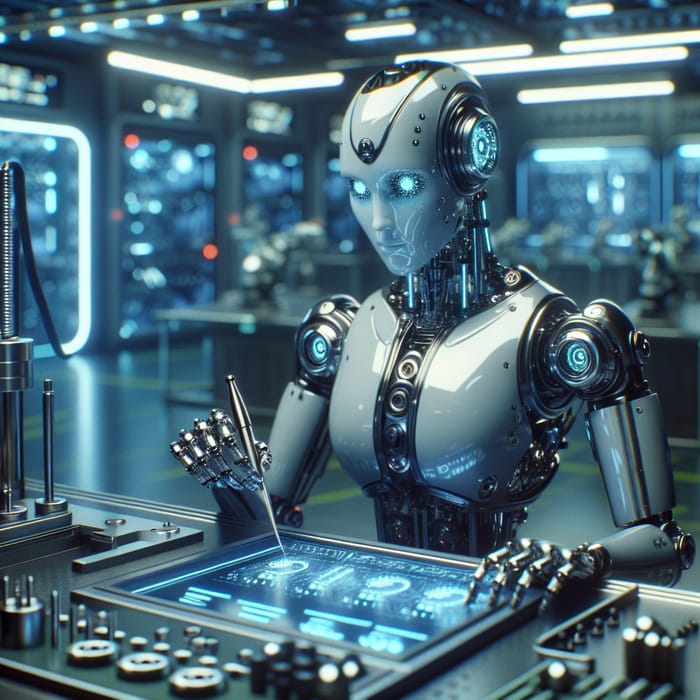
The integration of robotics into the workplace is not a trend; it is the new reality. It promises a future of unprecedented productivity, enhanced safety, and the potential to solve some of humanity’s biggest challenges, from manufacturing life-saving medicines to sustainably feeding the planet. The robotic workforce will free humans from dangerous, repetitive, and monotonous labor, allowing us to focus on the creative, strategic, and interpersonal tasks that define our humanity.
However, navigating this transition requires foresight and proactive effort. We must address the ethical considerations of automation, from algorithmic bias to data privacy. We must redesign our education systems to foster the skills of the future. And as a society, we must ensure that the immense wealth and productivity generated by automation are shared equitably, creating a future where technology serves all of humanity. The robots are here to stay, and our success will be defined by how well we learn to work with them.
